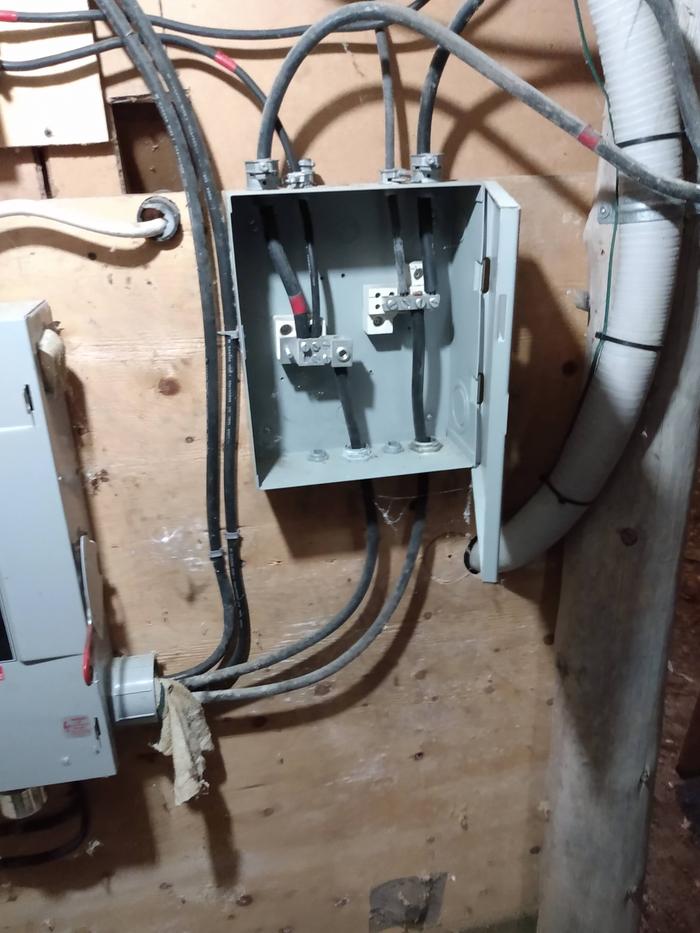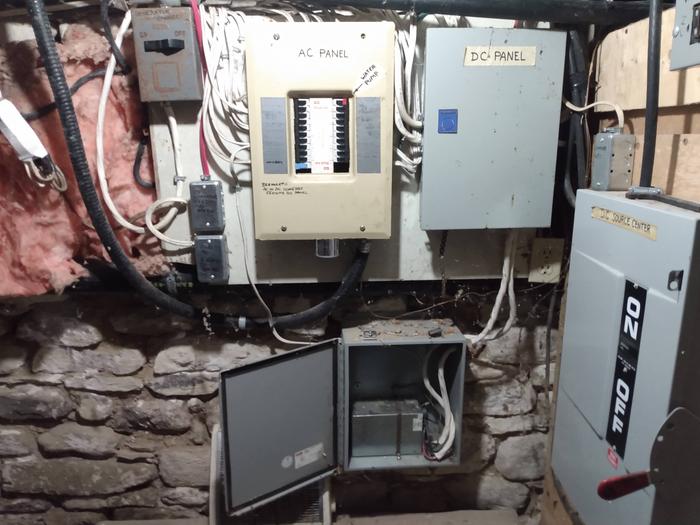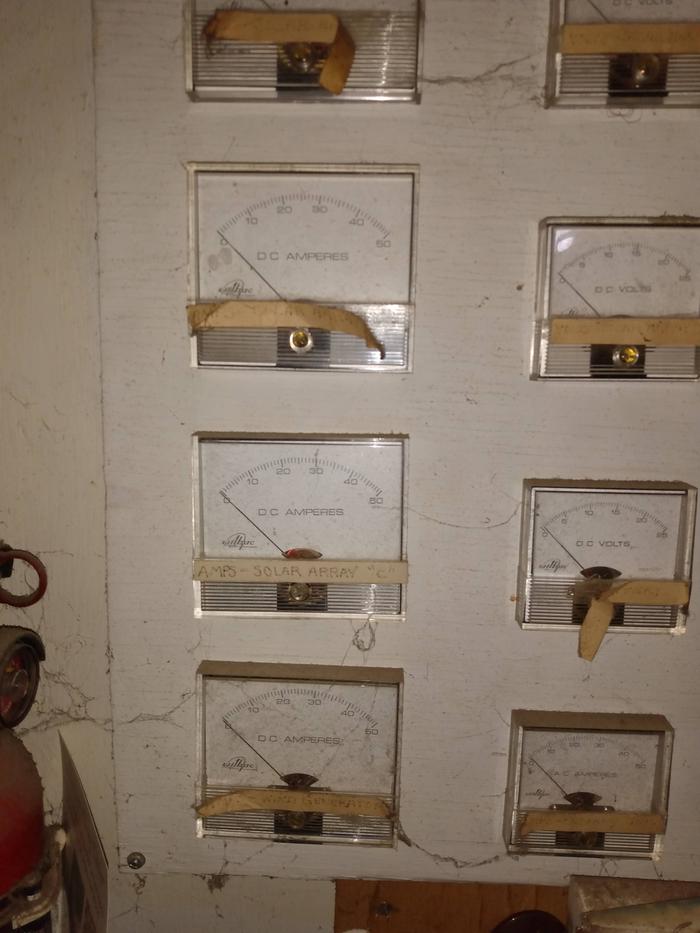
 2
2




Making my world a better place, one permaculture decision at a time.

 4
4




Mary Haasch wrote:Rebecca,
Very impressive and I must say that a part of me would really like a job like yours, teaching HS in the Himalayas, just wow! I really want to ask you about solar heat. That water heater set up looks interesting, if that's what it is, I don't understand how it works. I'm not familiar with any solar to heat options for heating a home. So many questions.
Works at a residential alternative high school in the Himalayas SECMOL.org . "Back home" is Cape Cod, E Coast USA.
 2
2




Rebecca Norman wrote:Hi David! I'm enjoying this discussion that you started, though I don't understand the technical bits.
I live in one of the most solar-friendly places on the planet, high desert at 10,500 feet in the rainshadow of the Himalayas.
I got my house built 5 years ago. I decided to use the abundant sun for passive heating of the house, and for water heating, and not (yet) for electricity. Grid connection was basically free for me, though it took a year or so to get them to put the poles up. Until then, we had an insulated wire lying on the ground, from a stolen connection from the nearest pole. (Rules are um... loser here in India)
If one of your big energy uses is heating the house or water, it's much better to use the sun's energy directly for heat rather than involving electric. Solar heating is much more efficient than converting the sun's energy to electricity, converting that to chemical energy for storage in a battery, converting it back to electricity to travel to the heating device, and then converting it to heat. Each of those transitions is not very efficient. You'd need at least ten times the area of solar collection to get the same amount of heat from solar electric than from any solar thermal method. (David or anyone, please correct me -- I'm guessing it might be 50 times the area, but panels and batteries are getting more efficient so maybe not)
The solar water heaters sold here in India are amazingly effective. They are glass vacuum tubes. You know those Chinese thermoses with a double-walled glass inside, that keep water boiling hot overnight so you can steep tea in the morning? Yeah, same stuff but 6-foot tubes. I sprung for the bigger model, 200 liter tank with electric backup. It's on my flat (desert) roof. So far, wonderful, but the day one of those tubes breaks or leaks, my entire 1000 liter cold water storage tank will drain out onto the earthen roof and it's gonna be a huge problem.
Now that I'm settled in and living in the house for 5 years, I'm thinking I should add solar electric as well. Until now, I just have 2 big batteries (150 amp hours? not sure) and an inverter tied to the grid, because the grid goes down for an hour or so a few times a week, and for whole days at least once or twice a year. I had two separate circuits installed to all the rooms: one circuit for lights and chargers on the inverter, and one circuit that is mains only, for the heavier devices and water pump. Especially in winter, the voltage is rarely high enough to run the pump, so I have to keep an eye on the voltage ,and quick run the pump when the voltage is 200V or above (Voltage is nominally 220-240V here. Ha!) I have 1000 liters of storage tank in the top of the house so can go a few days without a refill, if we're careful.
I'm not at home and sorry, I don't have a photo of the whole water heater, only a snapshot we took of our half-assed pipe insulation job.





 3
3




Works at a residential alternative high school in the Himalayas SECMOL.org . "Back home" is Cape Cod, E Coast USA.
 2
2




that makes sense. It would be the inlet and outlet that would be susceptible to freezing. There is no reason about half of the US couldn't use a solar hot water heater. It's due for a rebirth I think. I would still do a glycol loop pump and heat exchanger here if I was doing it professionally since western homes have grown soft and like their devices to run untended for decades.Rebecca Norman wrote:These glass thermos tubes are pretty damn good despite cold. We have about 6 to 8 weeks of pond hockey, normal minimums of -20C (-4F) most nights of January and the occasional -26C (-15F) and the frost line is roughly 3 feet. People are also using the same heaters in colder places in the region.
These glass vacuum tubes and the insulated tank have no trouble with it. Even in the morning the water is nice and hot. We taped the cold inlet pipe and the hot outlet pipe together, so running a little hot water downstairs fills the hot water pipe, which runs next to the cold water inlet inside a nice big wad of foam. Even if we forget to run a little in the night or early morning, it doesn't freeze, as long as my cobbled-together insulation stays intact. If I left the house empty through the winter without anyone to use hot water or trickle it in the night, the pipes connecting it to the house might freeze, and the rumor is also that the glass tubes could boil dry and crack.
It's rare to have 12-month running water in my region, so most people have these heaters not plumbed in to the house, but freestanding outside, and they pour a bucket of cold in one end and catch the bucket of hot that comes out the other.
 3
3




Mary Haasch wrote:I'm living in a small cottage with a 50 yo in the wall electric furnace (not used much until the last 2 years) and I'd like to add solar electric. I've preliminarily spoken to two different companies, not sure what I think of either one, but both think putting panels on the roof is cheaper than putting panels on the ground in the open area. The cottage roof panels would require new roofing which has about 5 - 7 years of expected life and cutting down the trees which have grown up close to the building. While both things would need to be done eventually, the open area installation seems more immediately cost and effort effective. In addition, the ground-based system in the open area could be used to power the workshop, the garden shed and the eventual small barn planned for the open area (the workshop and garden shed are existing). Any words of wisdom?
 1
1




Yanmar YM2610 Compact Tractor
Gardening like your life depended on it.




Neil Bendy wrote:
It's a very common ploy to say that you need a new roof before they can install the panels, but the good news is that they just happen to know a local roofing company who can give you a good estimate. Get a second opinion on the condition of your roof.
Ground mount is in my mind far superior especially if you will be doing a DIY install. I used 250 watt panels because of their size and weight, or rather lack thereof. Even with those smaller panels climbing a ladder and carrying them up to the roof in even a moderate breeze is not something to be undertaken lightly.
I just don't bounce as well as I used too after falling off things
Making my world a better place, one permaculture decision at a time.
 3
3




Mary Haasch wrote:
Needing a new roof is my idea based on the expected lifetime of the roof that is on the place. To their credit, neither of the companies tried to sell me any roofing.
I appreciate your thoughts on the ground mount and the size of the panels you used. Do you have any system of realigning the panels for the change in the position of the sun?
 3
3




seasonally adjusted manual mount will give you about 50 percent of the gain you get from trackers. The motorized trackers are just not worth it especially in snow country.Neil Bendy wrote:
Mary Haasch wrote:
Needing a new roof is my idea based on the expected lifetime of the roof that is on the place. To their credit, neither of the companies tried to sell me any roofing.
I appreciate your thoughts on the ground mount and the size of the panels you used. Do you have any system of realigning the panels for the change in the position of the sun?
When I first researched how to mount the panels I looked at motorized mounts that would track the sun, but for the extra power generated vs. the cost the numbers didn't add up for me.
The best compromise would be the ability to manually move the panels every few months as the sun's path changes.
But others who are far more knowledgeable also believe that the benefits don't justify the cost and extra maintenance of a motorized system.
https://www.solarreviews.com/blog/are-solar-axis-trackers-worth-the-additional-investment
https://unboundsolar.com/blog/should-you-buy-solar-tracker
 3
3







 1
1




![Filename: hoist-screenshot.jpg
Description: [Thumbnail for hoist-screenshot.jpg]](/t/206893/a/248055/hoist-screenshot.jpg)

|
pie. tiny ad:
Rocket Mass Heater Resources Wiki
https://permies.com/w/rmh-resources
|





